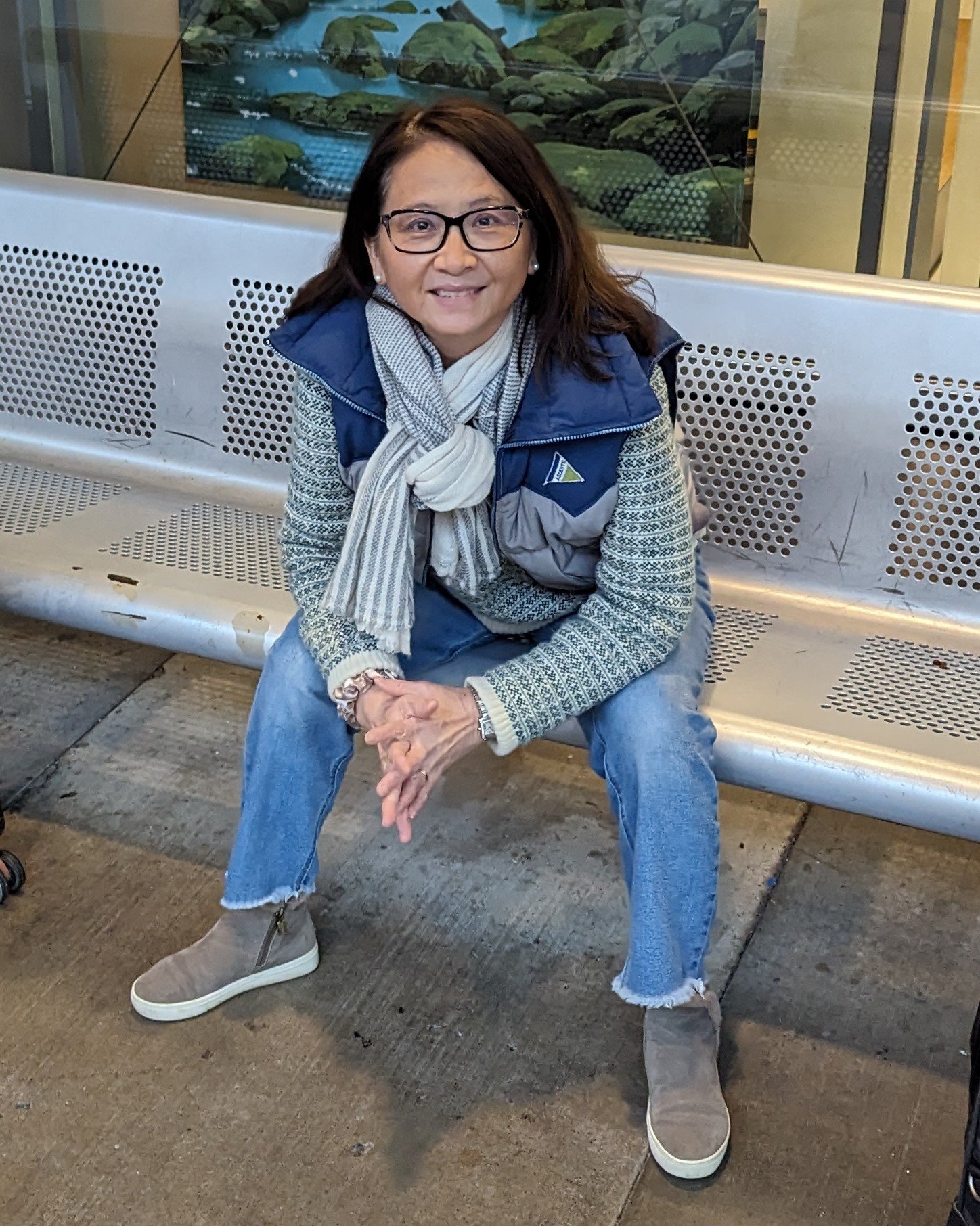I'm Taking Up Space to Battle Age Invisibility
Have you ever felt the profound injustices and rage that fueled and spurred you into action? Many have. I am not alone. I’m talking about age invisibility, inherent safety risks, and their impact on the graying population.
I travel regularly, and this week, a man at the airport who was selling Clear, an alternative to Pre Check TSA, stepped within two feet in front of me. I was mid-stride; he wouldn’t back up and expected me to yield.
In these awkward few seconds, I stood and waited. This salesman finally did and balked behind my back, which my husband retold after we passed security. This interaction was brief, under ten seconds perhaps, but it made me furious and indignant that anyone would feel entitled to hog public space and then blame someone else because they made him step back. I could have easily tripped and hurt myself by falling.
According to anecdotal and empirical evidence, this scenario played out frequently to the older generations, more women than men, and some employed beauty enhancements to battle against agism (a topic for another day.)
A survey by Gransnet.com of 1072 Gransnet users and Mumsnet users aged 50+ was conducted from October 27th to November 11th, 2016 (The data is not weighted). It highlighted the difference in age invisibility for men and women.
“Seven out of 10 (70%) believe that women become 'invisible' as they get older, but only a third (32%) think the same applies to men.
Women start to become 'invisible' at the age of 52, while men avoid this fate for more than a decade longer - the average age highlighted for men was 64.”
That evening, on a Thursday night, I took to Threads, a social media platform operated by Meta. I aired my grievances with two photos of myself taking up space to be seen for my safety as a result, which someone referred to as “manspreading.”
Manspreading the practice whereby a man, especially one traveling on public transportation, adopts a sitting position with his legs wide apart, in such a way as to infringe on an adjacent seat or seats.
I learned about age invisibility from my late father-in-law in the ‘90s and knew this is a universal phenomenon, not limited to women. However, it felt personal and distressing when it happened to me starting in my 50s. I’m happy to be invisible to men, especially by the creepy, unwanted elevator assessments, but it’s irksome when it compromises my safety.
I expected minimal engagement on Threads from my post regarding my grievances, even some pushbacks. To my astonishment, I garnered thousands of “Likes” and hundreds of responses to my brief post when I woke up the following day. The response meant that the sentiment must have struck a chord with older women who felt unheard, and we were trauma bonding. (At the time of this article, November 4, 2023, there were 318 replies and 2811 likes.)
My Threads post stated:
“I’m going to take up space because people kept running into me like I’m not visible or allowed to be here. It’s unsafe over 60. You know this feeling, ladies?”
Author Taking Up Space!
Women from their 50s to their late 80s commented and shared their experience of invisibility and their offenders of “space-hogging,” I will call it. One woman fell twice from this type of behavior and related that the man behind her tried to videotape her, and she had to tell him to stop. Another time, she fell into the mud, and someone helped her hobble home.
Several women used humor to share their invisibility, “I could rob a bank, and no one would catch me. I could run naked, and nobody would notice. The FBI should hire me because I would be a good invisible spy.”
Most concurred, shared their experiences, and fought back by staying their ground and waiting for their offenders to yield. A few contended that they were in their 50s and 60s but had not seen it. See the original post and comments HERE. Get the Threads app on your phone’s marketplace or HERE on Google Play and Apple.com.
Twenty-eight hundred women weighed in on this common social phenomenon, and we bonded over how to stay visible. If not in jest, the consensus was to dress brightly and take up space spatially and audibly (like a loud motorcycle to alert cars of their presence.) We refused to go away, making ourselves more diminutive, diminishing, and silent.
A few wrote and recommended women to walk with their elbows out from their bodies, ready to defend our space. One thought an umbrella or parasol might help, and one woman suggested putting our arms out in front to stop intruders into our space. These solutions may sound comical, but these are some ways women are resorting to keeping their personal space safe.
Some women also experienced the indignance and tantrums their offenders expressed toward them for standing their ground, like in my case. I’m a petite Asian woman, and it is a physical risk for me during these near-public skirmishes. Both men and younger women have willfully walked into me and expected me to yield on a sidewalk or footpath.
However, size doesn’t always rule out space-hogging, as some women reported that their bigger and taller stature didn’t deter the bullying. Lastly, people in wheelchairs or motorized scooters voiced their concerns that they suffered the same fate of invisibility.
Someone posed the question that we are not only facing age invisibility, but the added distraction of digital devices and an increasing lack of empathy and respect for people in the public space may further add to the problem.
If you are a woman over fifty and a man over sixty, what is your experience with invisibility and ageism? How do you combat it?
I look forward to hearing your experience and comments. Thank you.
Chi





